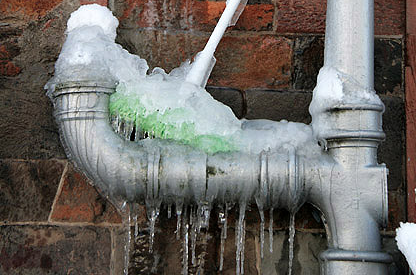Protecting Against Frozen Pipes in Cold Weather: Pro Advice
Protecting Against Frozen Pipes in Cold Weather: Pro Advice
Blog Article
What're your opinions on Preventing and dealing with frozen pipes?

Winter can ruin your pipes, particularly by freezing pipelines. Below's how to stop it from taking place and what to do if it does.
Intro
As temperature levels decrease, the danger of frozen pipes rises, possibly causing expensive repair work and water damage. Recognizing exactly how to prevent icy pipes is essential for homeowners in cool climates.
Recognizing Icy Pipes
What causes pipelines to freeze?
Pipes ice up when subjected to temperature levels below 32 ° F (0 ° C) for prolonged periods. As water inside the pipes ices up, it broadens, putting pressure on the pipe wall surfaces and possibly causing them to burst.
Risks and damages
Frozen pipelines can cause water system interruptions, home damage, and expensive repair services. Ruptured pipelines can flooding homes and create extensive structural damages.
Indicators of Frozen Pipes
Identifying frozen pipelines early can stop them from breaking.
Exactly how to determine frozen pipes
Seek lowered water circulation from faucets, unusual smells or noises from pipes, and visible frost on revealed pipes.
Prevention Tips
Shielding prone pipes
Cover pipes in insulation sleeves or make use of warm tape to protect them from freezing temperature levels. Focus on pipelines in unheated or outside locations of the home.
Heating strategies
Keep interior rooms sufficiently warmed, particularly locations with plumbing. Open up closet doors to permit warm air to flow around pipes under sinks.
Protecting Outside Plumbing
Garden hose pipes and outdoor taps
Disconnect and drain pipes garden tubes prior to wintertime. Mount frost-proof spigots or cover exterior faucets with protected caps.
What to Do If Your Pipes Freeze
Immediate activities to take
If you believe frozen pipes, maintain faucets available to eliminate stress as the ice melts. Use a hairdryer or towels soaked in warm water to thaw pipelines slowly.
Long-Term Solutions
Structural adjustments
Consider rerouting pipelines away from outside wall surfaces or unheated areas. Include additional insulation to attics, cellars, and crawl spaces.
Upgrading insulation
Buy top notch insulation for pipes, attic rooms, and walls. Appropriate insulation helps preserve consistent temperatures and lowers the danger of icy pipelines.
Final thought
Protecting against frozen pipes calls for proactive steps and fast feedbacks. By understanding the reasons, indications, and safety nets, house owners can protect their plumbing throughout winter.
5 Ways to Prevent Frozen Pipes
Drain Outdoor Faucets and Disconnect Hoses
First, close the shut-off valve that controls the flow of water in the pipe to your outdoor faucet. Then, head outside to disconnect and drain your hose and open the outdoor faucet to allow the water to completely drain out of the line. Turn off the faucet when done. Finally, head back to the shut-off valve and drain the remaining water inside the pipe into a bucket or container. Additionally, if you have a home irrigation system, you should consider hiring an expert to clear the system of water each year.
Insulate Pipes
One of the best and most cost-effective methods for preventing frozen water pipes is to wrap your pipes with insulation. This is especially important for areas in your home that aren’t exposed to heat, such as an attic. We suggest using foam sleeves, which can typically be found at your local hardware store.
Keep Heat Running at 65
Your pipes are located inside your walls, and the temperature there is much colder than the rest of the house. To prevent your pipes from freezing, The Insurance Information Institute suggests that you keep your home heated to at least 65 degrees, even when traveling. You may want to invest in smart devices that can keep an eye on the temperature in your home while you’re away.
Leave Water Dripping
Moving water — even a small trickle — can prevent ice from forming inside your pipes. When freezing temps are imminent, start a drip of water from all faucets that serve exposed pipes. Leaving a few faucets running will also help relieve pressure inside the pipes and help prevent a rupture if the water inside freezes.
Open Cupboard Doors
Warm your kitchen and bathroom pipes by opening cupboards and vanities. You should also leave your interior doors ajar to help warm air circulate evenly throughout your home.

We were made aware of that write-up about Helpful Tips to Prevent Frozen Pipes this Winter through a good friend on a different web property. Are you aware of someone else who is looking into the topic? Please feel free to promote it. Many thanks for going through it.
Customer Reviews Report this page